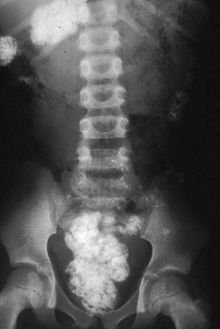In Dr. Farthing’s lab on Monday, one of the things that stood out to me was the discussion of Hoa and the consumption of geological materials. Professor McCoy’s mention of kaolinite led to me researching its potential nutritional value, eventually leading me to the term geophagia, or the eating of geological materials, specifically earth, soil, or clay.
According to the same source, geophagia is defined by psychologists as a form of pica, a mental disorder that is characterized by eating objects of no nutritional value. However, this website does mention that eating clay does not necessarily a pica patient make, as “some cultures promote eating clay as a part of medicinal practice.”
This begets the question as to why some cultures eat clay and other dirt, as well as when humans began this practice. According to NPR, humans may have started eating dirt even before we were classified as Homo Sapiens, over 2 million years ago. Geophagia has been reported in the writings of ancient Greeks such as Hippocrates, Celsus, and Pliny. Geophagia has been reported in many different contexts, including as a symptom of chlorosis, a disease commonly diagnosed for young women in the 18th century and attributed to “female hysteria” that has since been determined to be a form of anemia. Other reports of geophagia generally take place during and after famines, during pregnancy, and as a common cultural practice in the southern United States and in various regions of Africa to this day.
Because of how common eating dirt is, specifically white dirt that contains kaolinite, there has actually been a documentary released called Eat White Dirt that explores this practice in an attempt to understand the behavior and offer an explanation as to why people, usually pregnant people, crave dirt. Dr. Sera Young offers the theory that since clay absorbs toxins and acts as a natural filter, pregnant people might crave clay in an attempt to protect themselves against toxins since their immune system is naturally weakened by pregnancy. However, there have been no clinical studies in humans, only rats (which have shown promising results). It is also worth noting that humans are not the only species affected by geophagia. Over 200 species have been observed eating dirt, which adds to the argument that eating dirt has some sort of nutritional value, hypothesized in this source to be a way to get nutrients not found in available food sources, such as calcium or other minerals.
However, geophagia has its downsides, which is why it is not recommended for humans. The most common side effect is an intestinal blockage, as seen in the x-ray below.

In The Fifth Season, N.K. Jemisin takes geophagia a step further by making Hoa and the other stone eaters eat rocks in their solid form. As a stone eater, Hoa seems to only eat stone (and not dirt or other softer geological materials) as evidenced by his teeth, described as “Not square but faceted. Diamondine” (Jemisin 270). This leads to the question as to why the stone eaters eat rocks, and what potential nutritional value they might have. Additionally, something that I have been wondering is whether stone eaters prefer particular types of rocks for their nutritional value or if each one has their own favorite, much like humans prefer different types of foods based on personal taste.
Something else that I have pondered is the idea of humans eating dirt in the world Jemisin has created. In our world, humans have been known to eat dirt in times of famine, and a Season is a time of famine. However, given the prejudice against orogenes and the healthy fear of Father Earth, would fear and prejudice override the instinct to eat dirt? I am doubtful that these are issues we will see addressed, but nevertheless, it is something to think about.
To link this all together, geophagia is a long-known phenomenon that we still don’t have a good explanation for, and it is interesting that Jemisin has worked it into her novel as a characteristic of stone eaters, a strange race that even the characters in The Fifth Season don’t understand. Rock-eating, though employed in the novel as a way to further the strangeness of the stone eaters, is actually a well-known occurrence. The old adage that the truth is stranger than fiction rings true in this case.
—
Also, in response to Dr. Farthing’s question, the type of rock I would eat is gypsum, as it only ranks 2 on the Moh’s Hardness Scale and has been approved by the FDA (in certain forms) for human consumption.
